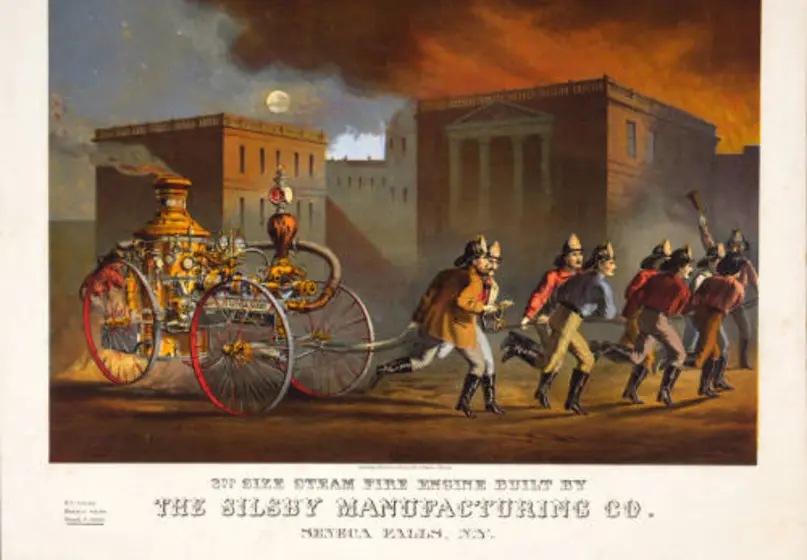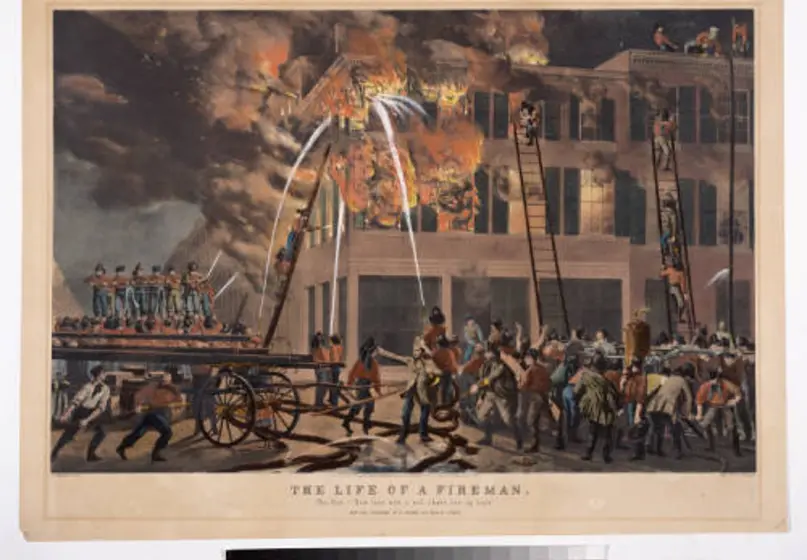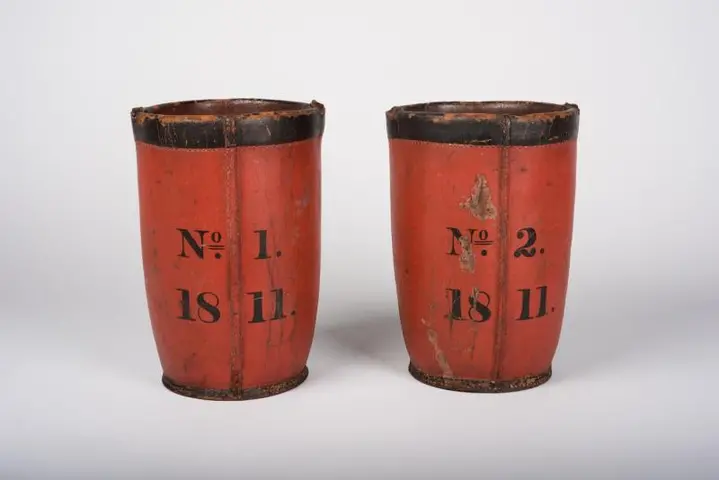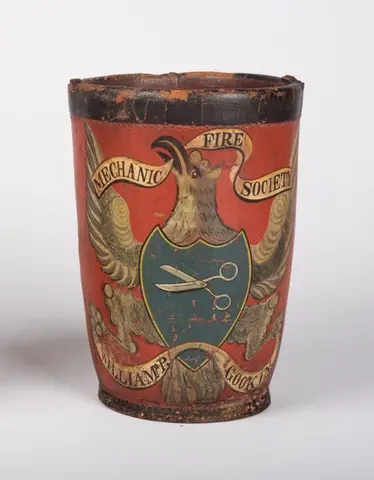Object Story: Pair of Fire Buckets - Body
Pair of Fire Buckets
Fancy Fire Buckets and Looking Out for Your Own
If these leather water buckets look a bit overly decorated considering their function, it’s because fire-fighting in the early 1800s was about much more than doing the job of putting out fires. Extinguishing a fire at your home and protecting your belongings required having allegiances and belonging to exclusive clubs called “fire societies” to which you paid dues, sort of like insurance. At the first sign of a fire, members of a fire society would immediately mobilize to fetch water with the buckets and remove the family’s belongings from the burning house.
These particular buckets were kept in the home of William Gookin, a tailor, and are decorated to show his family’s membership in the Mechanic Fire Society of Portsmouth, New Hampshire. The pair of scissors symbolizes his chosen profession as a tailor and seller of fine fabrics for clothing. The artistry and attention to detail in the design shows the pride members had in belonging to their beloved fire societies.

McLellan & Green Armstrong (printer), 3rd size steam fire engine built by the Silsby Manufacturing Co. Seneca Falls, N.Y., approximately 1871, color printed lithograph. | The Jay T. Last Collection of Graphic Arts and Social History, Huntington Digital Library
In the early development of the United States, there were very few, if any, municipal and community services like police, fire, and sanitation. We take these things for granted now, but in the past people had to form groups to support each other with these needs. Fire societies were one of those groups. Typically, they were limited to about twenty friends and neighbors who would be willing to help in an emergency. These societies were small enough to build trust in each other, which was especially important because it was common for people’s valuables to be stolen during the chaos of a fire. The more that these groups fought side-by-side, the greater the trust became.
The trouble with fires is that they spread from house to house. A fire in one house could become a concern for the entire town. Not everyone could join a fire society for protection. If the fire victim was a woman, African American, or a member of a group that was disliked or did not have the money or social connections to belong to a fire society, that could mean they didn’t receive help. What if that fire spread to nearby buildings? Concern for the common good eventually led to the formation of city fire departments and more equitable systems for helping those in need.

Louis Maurer (1832-1932), Nathaniel Currier (1813-1888), and N. Currier (publisher), The life of a fireman. The fire. "Now then with a will-shake her up boys!" 1854. color printed and hand colored lithograph. | Prints and Ephemera, Huntington Digital Library.
Even with municipal fire companies being formed, independent fire societies continued to exist. Often rushing to fires, they competed with one another to get to a fire first so they could provide members with a sense of belonging and trust. Often these competing fire companies got in each other’s way and sabotaged each other’s efforts to fight fires. Until the mid- to late-nineteenth century (depending on where one lived), having private fire-fighting groups was as often at odds with the idea of providing for the common good. Eventually people began to realize that fire-fighting was a necessary common good. Today we call 911 if there is a fire. We all have access to that support. That’s because most fire departments today are run by city or county governments. We pay taxes, and in exchange, everyone is entitled to the help of professional fire-fighters.
Questions for Discussion
- Very early in America's history, looking out for your own people was deeply ingrained in national values. To what extent is this way of thinking still with us? Is it part of who you are?
- When might exclusive groups like fire societies be better in serving the common good? When might they become a problem?
- One of the rules for participation in a fire society was that each member would have two buckets painted uniformly. How might this be important during a fire? What other purposes might it serve?


